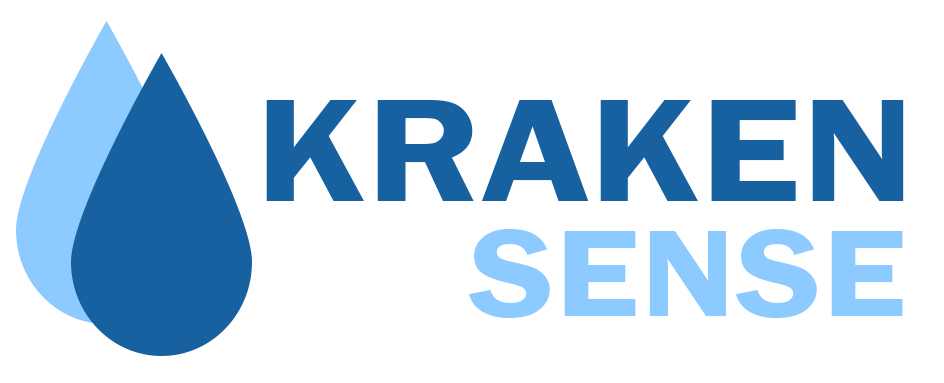Revolutionizing Food Safety: Kraken Sense's Advanced Early Detection System for Salmonella spp. Through invA Gene Targeting
Food safety has never been more critical in our interconnected global economy. As supply chains stretch across continents and processing facilities scale to meet growing demand, the risk of foodborne pathogens infiltrating our food systems has increased exponentially. Among these threats, Salmonella stands as one of the most persistent and dangerous adversaries, responsible for outbreaks that claim lives, destroy businesses, and erode consumer trust. Today, we explore how Kraken Sense's revolutionary real-time qPCR platform is transforming the landscape of food safety through precise, rapid detection of Salmonella spp. via the invA gene.
The Salmonella Crisis: Understanding the Scope of the Problem
Salmonella represents one of the most significant public health challenges in modern food production. The statistics paint a sobering picture: according to the Centers for Disease Control and Prevention (CDC), Salmonella causes approximately 1.35 million infections annually in the United States alone, resulting in 26,500 hospitalizations and 420 deaths. Globally, the World Health Organization estimates that Salmonella is responsible for 93.8 million cases of gastroenteritis worldwide each year, with 155,000 deaths attributed to the pathogen.
The Economic Impact
Beyond the human toll, Salmonella contamination exacts a devastating economic price. A single outbreak can cost food companies millions of dollars in recalls, legal settlements, and lost revenue. The 2008-2009 Salmonella outbreak linked to peanut products resulted in over $1 billion in economic losses, while the 2010 egg recall affected more than 550 million eggs and cost the industry an estimated $100 million. These figures don't account for the long-term damage to brand reputation and consumer confidence that can persist for years after an outbreak.
Clinical Manifestations and Vulnerable Populations
Salmonella infections, medically known as salmonellosis, typically manifest within 6-72 hours of exposure. While many cases present with classic symptoms including diarrhea, fever, abdominal cramps, and vomiting, the severity can vary dramatically. Healthy adults may experience mild discomfort for 4-7 days, while vulnerable populations face significantly higher risks.
Children under 5, adults over 65, and immunocompromised individuals are particularly susceptible to severe complications. These can include bacteremia (bloodstream infection), focal infections affecting bones, joints, or the nervous system, and typhoid fever in cases involving Salmonella Typhi. Reactive arthritis, a chronic condition that can develop weeks after the initial infection, affects approximately 2-15% of patients and can cause long-lasting joint pain and mobility issues.
The Science Behind the invA Gene: A Molecular Fingerprint
The invA gene represents a breakthrough in Salmonella detection technology. This invasion gene, present in virtually all Salmonella serovars, encodes proteins essential for the pathogen's ability to invade host cells. Its universal presence across Salmonella species, combined with its high degree of conservation, makes it an ideal target for molecular detection methods.
Molecular Characteristics
The invA gene spans approximately 284 base pairs and is located within Salmonella Pathogenicity Island 1 (SPI-1), a cluster of genes crucial for the bacterium's virulence. This genetic region has remained remarkably stable across different Salmonella serovars, making it a reliable diagnostic marker. Unlike other detection methods that may miss certain strains or produce false negatives, invA gene targeting provides exceptional specificity and sensitivity.
Advantages Over Traditional Methods
Traditional Salmonella detection methods, including culture-based approaches, can take 3-5 days to produce results. These methods, while still considered the gold standard in many regulatory frameworks, are time-consuming and labor-intensive. By the time results are available, contaminated products may have already reached consumers, making prevention impossible.
Serological methods, while faster than culture, can suffer from cross-reactivity issues and may not detect all Salmonella serovars equally. The invA gene approach circumvents these limitations by targeting a genetic sequence that is both highly conserved and specific to Salmonella, ensuring reliable detection across all medically relevant strains.
Kraken Sense: Redefining Real-Time Food Safety Monitoring
Kraken Sense represents a paradigm shift in food safety technology, moving beyond reactive testing to proactive, continuous monitoring. This advanced platform integrates cutting-edge molecular biology with data analytics to provide insight into food safety risks.
Conclusion: The Future of Food Safety
Kraken Sense represents more than just a technological advancement; it embodies a fundamental shift in how we approach food safety. By moving from reactive testing to proactive monitoring, from days to minutes, from laboratory-based to real-time detection, this platform is redefining industry standards and consumer expectations.
The integration of molecular biology, automation, and data analytics in Kraken Sense provides unprecedented insight into food safety risks while enabling rapid intervention when contamination is detected. As food supply chains continue to grow in complexity and consumer expectations for safety continue to rise, technologies like Kraken Sense will become essential tools for protecting public health and maintaining consumer confidence.
The journey toward zero-tolerance food safety requires continued innovation, collaboration between industry and regulators, and commitment to implementing the most advanced technologies available. Kraken Sense represents a crucial step in this journey, providing the tools needed to detect, prevent, and eliminate Salmonella contamination before it can reach consumers.
As we look toward the future, the promise of real-time, molecular-based pathogen detection extends beyond Salmonella to encompass the full spectrum of foodborne pathogens. The foundation established by Kraken Sense will continue to evolve, incorporating new targets, improved automation, and enhanced analytics to meet the ever-changing challenges of food safety in the 21st century.
Through continued investment in technology, validation, and implementation, we can work toward a future where foodborne illness becomes increasingly rare, where consumer confidence in food safety is restored, and where the tools exist to protect public health at every step of the food supply chain. Kraken Sense is not just detecting pathogens; it's detecting the future of food safety.
